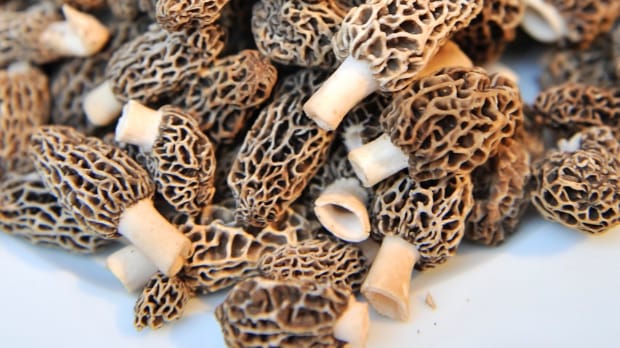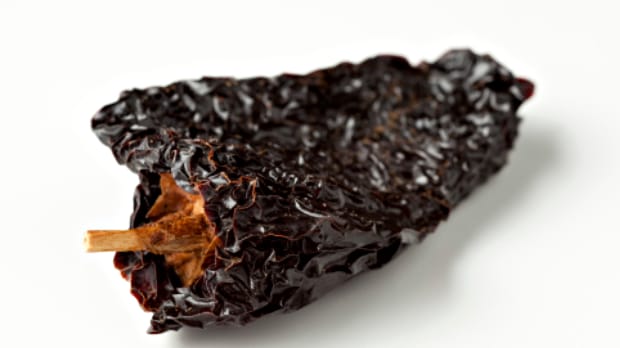What is a Morel?
A morel is a type of mushroom that is a member of the fungus family. These mushrooms are safe to eat and provide not only a unique flavor, but also many health benefits. Morel, pronounced [mo-rel], can be found in the wild or grown commercially. They have a distinctive cone-shaped cap and a honeycomb-like texture on their surface. With a delicate, nutty flavor and meaty texture, morels make a delicious addition to many meals. Whether sautéed, grilled, or added to a soup, these mushrooms are a healthy and flavorful way to enhance any dish. So, next time you come across a morel, don’t hesitate to try this nutritious and tasty food!
What are the Nutritional Benefits?
Today, let’s talk about the fabulous and often overlooked morel mushroom, and its amazing nutritional benefits! First and foremost, morels are a great source of protein and dietary fiber, which aids digestion and helps regulate blood sugar levels. Not to mention, they are also low in calories and fat, making them an ideal food to incorporate into a balanced diet. But that’s not all! These funky little fungi are also jam-packed with essential vitamins and minerals such as iron, calcium, and vitamin D. These nutrients are crucial for maintaining healthy bones, skin, and a strong immune system.
And did you know that morels contain potent antioxidants that can help protect against cancer and other diseases? It’s true! These antioxidants work to neutralize harmful free radicals in the body that can cause damage to cells and tissues. So, there you have it folks – just a few of the many reasons why you should consider adding morels to your diet. Not only are they delicious, but they are also incredibly nutritious and can provide a wide range of health benefits. So next time you see these beautiful little mushrooms at the grocery store or farmer’s market, don’t hesitate to give them a try!

Types Available
Are you a fan of the highly coveted and delicious morel mushrooms? Did you know that there is more than one type of morel available out there? In fact, there are several different types of morels that you can find in grocery stores and farmer’s markets. They are often grouped by color. There are multiple varieties in the yellow and black color groups, while there is only one white morel. Let’s take a closer look at some of them!
First up, we have the yellow morel, also called the common morel because it is the most widely available type. These mushrooms have a honeycomb-like appearance and yellow-brown coloring. The nutty, earthy flavor is delicious in a variety of dishes, from pasta to risotto to sauces.

Next, we have the black morels. These mushrooms have a darker color and a very intense flavor. They are often used in rich, hearty dishes, such as stews and braises.
Finally, we have the white morel, also called the half-free morel, which is a bit of an outlier. These mushrooms have a distinct shape, with the cap hanging down from a stem that is only attached at the bottom. They have a white or light colored cap and a delicate, mild flavor. The nutty, slightly sweet flavor is great in stir-fries and sautés, soups and stews.
So there you have it – a brief overview of the different varieties of morels! Whichever one you choose, you’re sure to enjoy the unique and delicious flavor of this beloved mushroom.
What are the Best Uses?
If you’re searching for a unique and delicious addition to your meals, look no further than the morel. This wild mushroom has a distinct, nutty flavor and a meaty texture that makes it a popular choice in haute cuisine. There are many ways to use morels in cooking, but one of the best is to simply sauté them in butter and garlic. This brings out their rich, earthy flavor and makes them a perfect accompaniment to steak or roasted chicken.
If you’re feeling more adventurous, try incorporating morels into pasta dishes, soups, or even as a topping for pizza. Their unique taste and texture will make any dish more flavorful and interesting.
When selecting morels, it’s important to choose fresh, plump mushrooms with no signs of mold or discoloration. They can be quite expensive, so consider using them sparingly or in combination with other, less expensive ingredients. Overall, morels are a versatile and delicious produce item that can add a touch of elegance to any meal. Give them a try and see what delicious creations you can come up with!
How do You Store Morels?
If you’re lucky enough to get your hands on some fresh morel mushrooms, then you’ll want to make sure you store them properly to extend their shelf life. To start, you should always give your morels a good once over and remove any dirt, debris, or bugs. If you need to wash the morels, pat them dry before storing them. Once you’ve done that, you can store them in a dry, paper bag or wrap them in a paper towel and toss them into a sealed container with plenty of ventilation. Be sure not to store them in a plastic bag, as this can lead to moisture buildup and cause the morels to spoil faster.
For longer storage, you can try dehydrating your morels – simply clean them, slice them into smaller pieces, and lay them out in a single layer on a dehydrator tray. Set the dehydrator to 125°F to 135°F, and let them dry out for 12 to 18 hours. Once they are fully dried, store them in an airtight container in a cool, dry place.
When it comes time to cook with your Morels, be sure to inspect them again and discard any that appear slimy, moldy, or off-color. Bon appétit!
How to Prepare Morels
Have you ever come across those weird-looking mushrooms that are called morels? These cone-shaped fungi have a honeycomb-like exterior and a spongy texture. While some people might find the appearance strange, many others consider morels as a gourmet delicacy because of their unique flavor. To prepare morels, start by cutting off the bottom of the mushroom and dusting off any dirt or debris.
Once cleaned, you can choose to slice them in half or leave them whole, depending on the recipe you’re following. Before cooking, it’s important to note that morels should never be eaten raw because they contain a toxin that can only be removed through cooking.
Morels can be sautéed, roasted, or even stuffed. They are a delicious addition to soups, stews, pasta dishes, or served as a side with grilled meats. Overall, Morels are a unique and flavorful ingredient that is worth a try if you’re feeling adventurous in the kitchen.
When is Morel in Season?
Are you a fan of mushrooms? If so, you might have heard about morel, a type of wild mushroom with a distinctive shape and flavor. But do you know when to find them at their freshest? If you’re thinking about buying or cooking this prized ingredient, you may want to know that spring is the prime season for morel mushrooms. As the weather warms up and the snow melts away, these mushrooms start to pop up in damp areas such as forests and under trees. So, if you’re looking to make the most of your dishes, be sure to keep an eye out for morels in the season. They can make any dish, from soups to pastas, taste a whole lot better with their earthy, nutty taste. Remember, freshness is key when it comes to any ingredient, but especially seasonal items like morel mushrooms.
Improve Your Health With Seasonal Eating
What to Serve Morel With?
- Asparagus
- Spinach
- Potatoes
- Garlic
- Mushrooms
- Cream
- Butter
- Thyme
- Parsley
- Sage
What Traditional Cuisines Use Morels?
Morel mushrooms are a prized ingredient in many traditional cuisines around the world, including French, Italian, German, Scandinavian, and American. They are often used in sauces, soups, stews, and risottos. They can also be used as toppings for pasta dishes, in omelets, and as a stuffing for poultry and other meats.
Tasty Recipes
- Morel and Asparagus Crispy Pizza
- Pan-Roasted Chicken with Morel Mushroom Sauce
- Morel Ramp Potato Chowder Recipe
- Pasta With Morels, Peas and Parmesan
- Fried Morels & Lemon Crema
Key Takeaways
- Use a brush to clean the morels before cooking.
- Slice morels in half lengthwise before cooking to check for bugs and dirt.
- To cook, sauté or fry morels with butter or olive oil until golden brown and tender.
- For a richer flavor, add garlic, onions, or shallots to the pan with the morels.
- Serve cooked morels as a side dish or add to soups, omelets, and pasta dishes.
- Store fresh morels in a paper bag in the refrigerator for up to one week.
- Don’t eat raw morels as they can cause stomach upset. They contain a toxin that’s only removed when cooked thoroughly.
References: Morel mushroom: A review of its traditional uses, phytochemistry and pharmacology | Nutritional and medicinal values of edible morel mushrooms: A review | Nutritional and Health Benefits of Morels (Morchella spp.): A Review | Health Benefits of Wild Morel Mushrooms: A Review | The Nutritional and Health Benefits of Wild Edible Mushrooms: A Review




